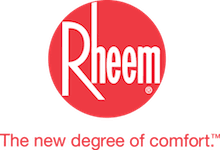Heating, ventilation, and air conditioning (HVAC) is a system that controls the indoor environment of a building. The system maintains comfortable and healthy air quality by controlling temperature, humidity, and air circulation. HVAC systems are used in residential, commercial, and industrial buildings to provide thermal comfort and maintain indoor air quality.
The primary purpose of HVAC systems is to maintain a comfortable and healthy indoor environment. Therefore, during the winter season, the system heats the indoor air, while during the summer season, it cools the indoor air.
This ensures that the temperature inside the building is always within a comfortable range. HVAC systems also regulate humidity levels to prevent mold growth and other allergens.
The ventilation component of the HVAC system is responsible for maintaining healthy indoor air quality. Its design aims to supply fresh air to the building while extracting stale air. This helps remove pollutants and contaminants from the indoor air, which can adversely affect human health. In addition, HVAC systems filter the air, removing particles such as dust and pollen, which can cause allergies and respiratory problems.
Depending on the type of building where they are installed, HVAC systems can exhibit considerable differences in size and complexity. For example, a residential HVAC system typically consists of a furnace, an air conditioner, and a ductwork system. On the other hand, a commercial HVAC system can include multiple units, ductwork, and complex control systems.
Here is a list of some of the components of an HVAC system:
- Thermostat: The thermostat is the brain of the HVAC system. It is responsible for regulating the temperature inside the building.
- Furnace: The furnace is the heating component of the HVAC system. It heats the air that is distributed throughout the building.
- Air conditioner: The air conditioner is responsible for cooling indoor air.
- Heat pump: A heat pump is an alternative to a traditional furnace and air conditioner. It can both heat and cool the indoor air.
- Ductwork: The ductwork is the network of pipes that distribute the heated or cooled air throughout the building.
- Ventilation system: The ventilation system brings fresh air into the building and removes stale air.
- Air filter: The air filter removes particles such as dust and pollen from the indoor air.
- Humidifier/dehumidifier: A humidifier adds moisture to the indoor air, while a dehumidifier removes moisture.
- Thermostatic expansion valve: regulates refrigerant flow in the air conditioning system.
- Evaporator coil: The evaporator coil absorbs heat from the indoor air.
- Condenser coil: The condenser coil releases heat absorbed from the indoor air to the outdoor environment.
- Compressor: The compressor compresses the refrigerant in the air conditioning system.
- Refrigerant: Refrigerant is a substance that absorbs and releases heat in the air conditioning system.
- Blower: The blower distributes the heated or cooled air throughout the building.
- Control system: The control system regulates the operation of the HVAC system.
In conclusion, HVAC systems are an essential part of modern buildings. They are responsible for maintaining comfortable and healthy indoor environments, and they are used in residential, commercial, and industrial buildings.
HVAC systems can vary significantly in terms of size and complexity. Still, they all share the same essential components, including a thermostat, furnace, air conditioner, ductwork, ventilation system, air filter, and control system. By regulating temperature, humidity, and air circulation, HVAC systems help to create a comfortable and healthy indoor environment for the occupants of the building.
















